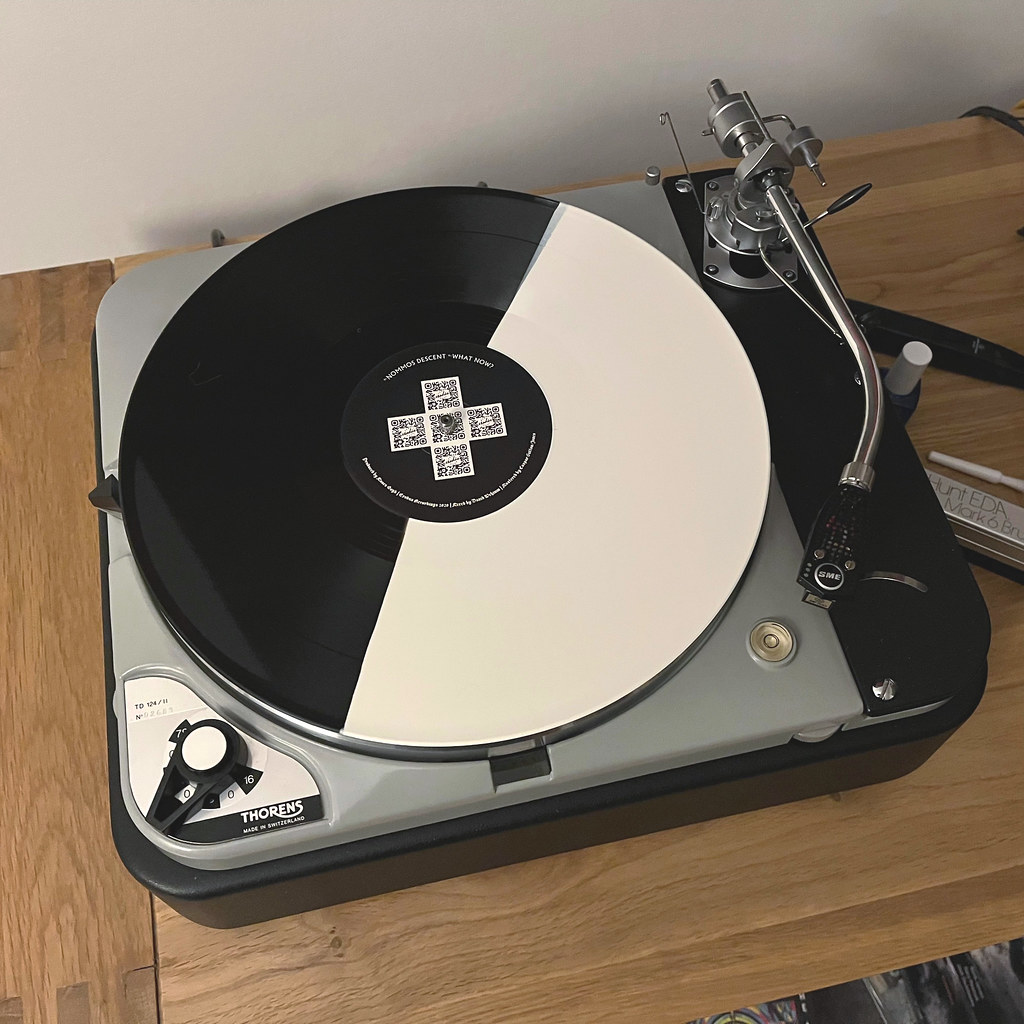waxkinglyrical
pfm Member
Nice Analog Relax cartridge fitted for this video - a slightly unfortunately named brand, perhaps.
Surely only if you’re using it with a Schiit phono stage and a Shinola turntable…
Nice Analog Relax cartridge fitted for this video - a slightly unfortunately named brand, perhaps.
Ah! Got my info. skewed, but 12" arms don't require much if any antiskate, depending on the cart. in some cases, and interestingly, as Sonddek says, the signal. Best to under bias than over with coils, i.m.o.
No, don't 'underbias', it's definitely better to set bias so the diamond wears equally on both sides.
This suggests that looking very carefully at your cantilever every 20 or 50 hours of play and adjusting bias accordingly by decreasing amounts is a reliable way of reaching a good setting for a particular cartridge.
This is a complete guess, but I'd imagine overegging the anti skate to compensate for a skewed cantilever will possibly compress the suspension in one direction or the other, changing the dynamics of the suspension/cantilever relationship?Or increasing? Presumably, a skewed canti. can be brought back into line by over/under shooting the bias. I'd say that 20 to 50 hours wouldn't show much unless your have phenomenally analytical eyesight ! Maybe ally canti's are more difficult to discern? I had two Lyras on my Five over a decade or more and dialled in about 1/3rd of the VTF on the bias control and the canti's were straight after taking the cart's off, so I got the impression that under half VTF is about right for good (boron) coils. Purely personal observation, mind; far too many variables here.
Some years ago, I read of Koetsu owners finding their cantilevers (boron) skewing because of over-biasing. The thought then was that Ks required less bias than other cart's. Why this should be so I've no idea unless it's tied in with low compliance.
This is a complete guess, but I'd imagine overegging the anti skate to compensate for a skewed cantilever will possibly compress the suspension in one direction or the other, changing the dynamics of the suspension/cantilever relationship?
PS I suspect there is a very strong argument for temporarily upping the bias value for 12” singles on arms with an easy dial adjustment.
Well, who'd've thought it? You did, and you've got a point but luckily, 45 rpm singles (or LPs) are, I hope, mostly the province of upmarket special editions or dance band stuff (or whatever).
I also expect that coloured vinyl requires more than the black stuff.

Black vinyl is coloured vinyl, the natural state is a translucent milky white as I understand it. The black is a dye. I have questions about truly clear/transparent vinyl, I suspect that may be another type of plastic, but I’m not sure.
Why? Black vinyl is coloured vinyl, the natural state is a translucent milky white as I understand it. The black is a dye. I have questions about truly clear/transparent vinyl, I suspect that may be another type of plastic, but I’m not sure. Whatever modern coloured vinyl doesn’t fill me with fear the way some ‘70s and ‘80s stuff did, I think they have dramatically improved the dye processes. Anyway, here’s a suitable test record:

My understanding was that the stuff that makes it black also reduced friction and as a consequence surface noise. Otherwise why bother making records black? Might be nonsense.
Otherwise why bother making records black?
LOL at the tone of some of the posts. Keyboard dictators.
Anyway, here's yet another spin: https://www.furnacemfg.com/blog/why-are-vinyl-records-black/
